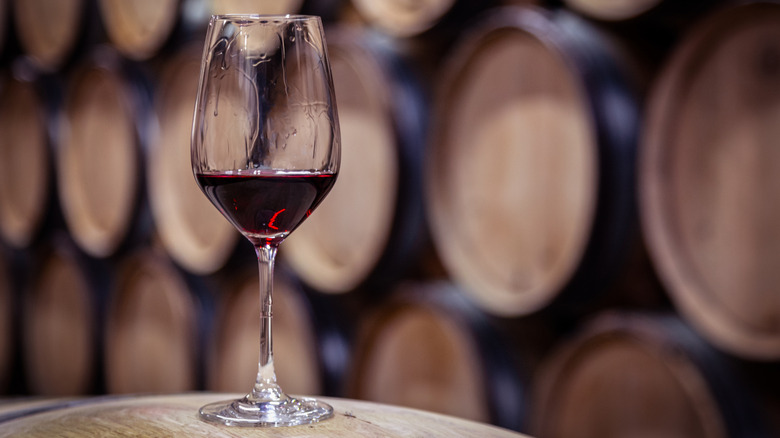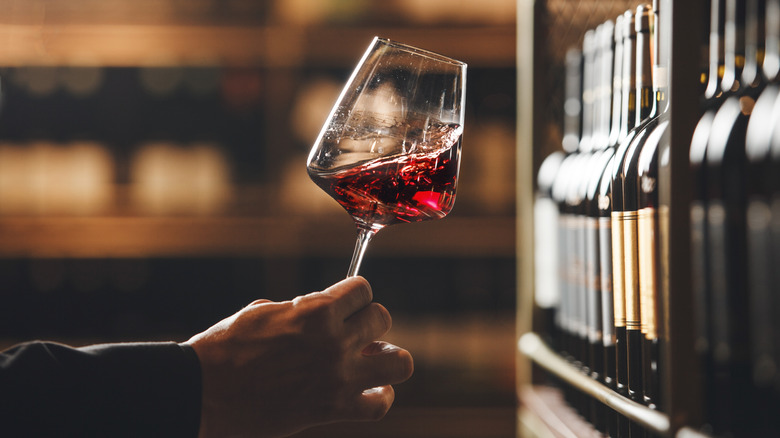What Your Sommelier Is Trying To Explain When They Mention French And American Oak
Wine is so wonderfully complex, sommeliers spend years studying it so they can understand it. This is also why the industry is plagued by many common wine myths. No, red wine isn't necessarily better aged, and you certainly can serve white wine with barbecue. Still, not everything is made up. Take, for instance, the rivalry between French and American oak. Matt Uva, wine industry professional and consultant at Ghosts in the Cellar explained to The Takeout that the difference between the two styles is significant. "French oak from cooler climates like Allier, Nevers, and Tronçais, grows slowly, producing a tighter grain. American oak is grown in regions warmer than those in France — Missouri, Minnesota — and grows faster, producing a looser grain." This creates a distinctive flavor for each method. "With the tighter grain, there is a slower release of oak compounds into the wine. The looser grain will give a faster, more concentrated extraction. This leads to French oak feeling subtle and American oak feeling bold."
Uva elaborated on wine service, adding, "If a sommelier raves about 'French oak' on a wine, we can expect finesse and nuance, a slight spice character, and seamless integration with the fruit." Conversely, American oak denotes a stronger flavor. "American oak typically imparts vanilla, coconut, and toasted notes that are more immediately noticeable and can add a sweet or creamy impression to the wine," he said. "When a sommelier mentions it, they're preparing you for a bolder, oak-forward style."
How to consider oak types when ordering wine
Although some people have strong preferences between French and American oak, Matt Uva confirmed, "One isn't better than the other; they're just different tools in a winemaker's kit." Similarly, drinkers can look for each style, depending on what they want in a given moment. "French oak is finer grained and adds structure, texture, and spice notes to a wine," Uva explained. "French oak tends to 'frame the fruit' rather than overpower it. The impact of French oak is a more polished and food-friendly wine." You can find this oak type in wines like high-end chardonnay, Burgundy, and Bordeaux, which are some of the best wines for pairing with steak and other smoky foods.
Meanwhile, Uva noted, "American oak has ... a higher concentration of aromatic compounds, giving it a more pronounced flavor imprint — most commonly adding sweet spice and vanilla notes ... [It] shows up frequently in fuller-bodied, fruit-forward wines like California cabernet sauvignon, zinfandel, Australian shiraz, and traditional Rioja. Its sweeter, more pronounced flavors marry well with ripe fruit and bolder styles."
If you're learning to determine which oak style has been used in a wine, Uva offered a handy shortcut. "While this isn't true 100% of the time, I've found an easy marker for blind tasting to be, 'cocoa powder leans French; vanilla bean leans American'." Use this the next time you want to impress your friends while dining at a high-end restaurant.

